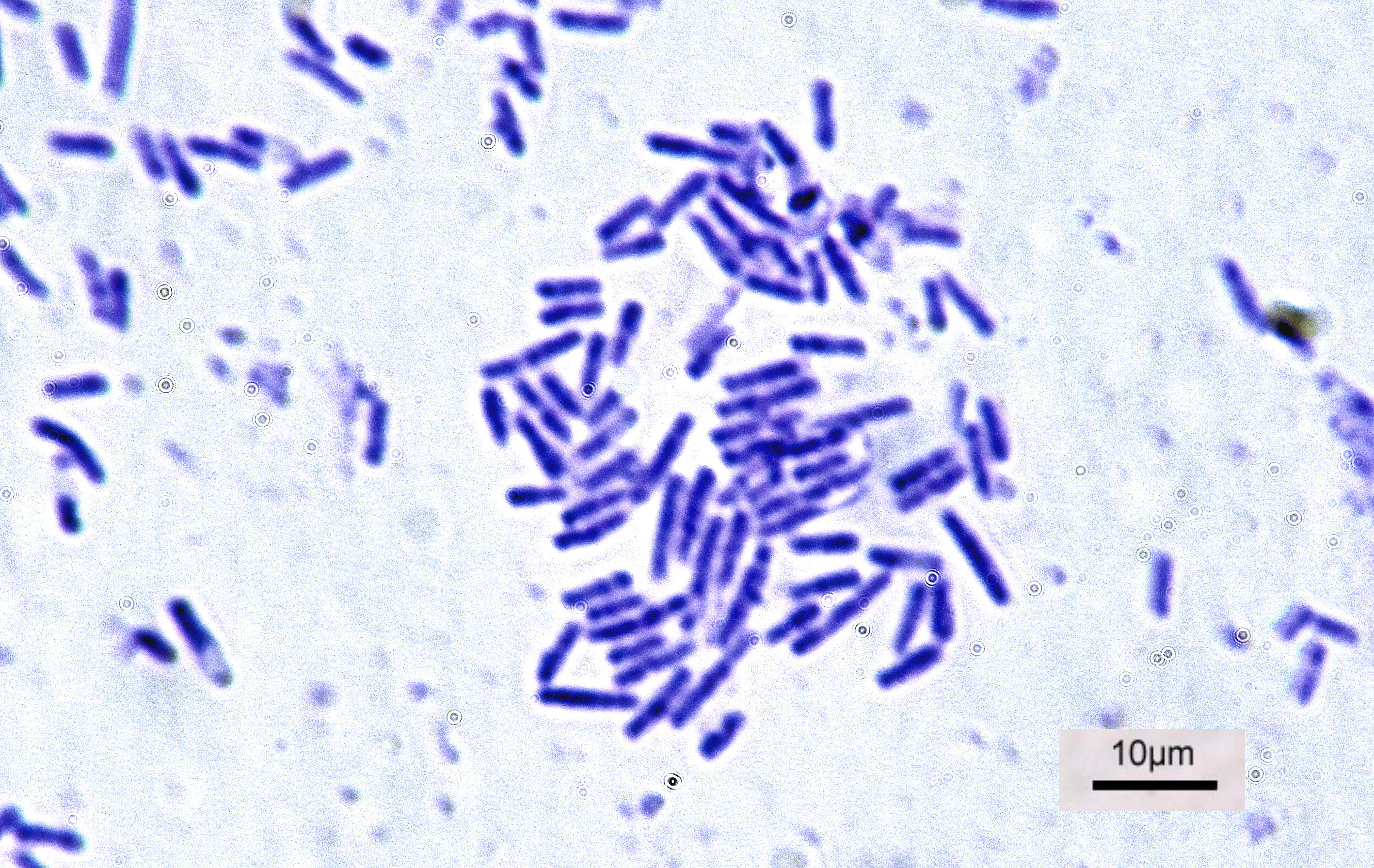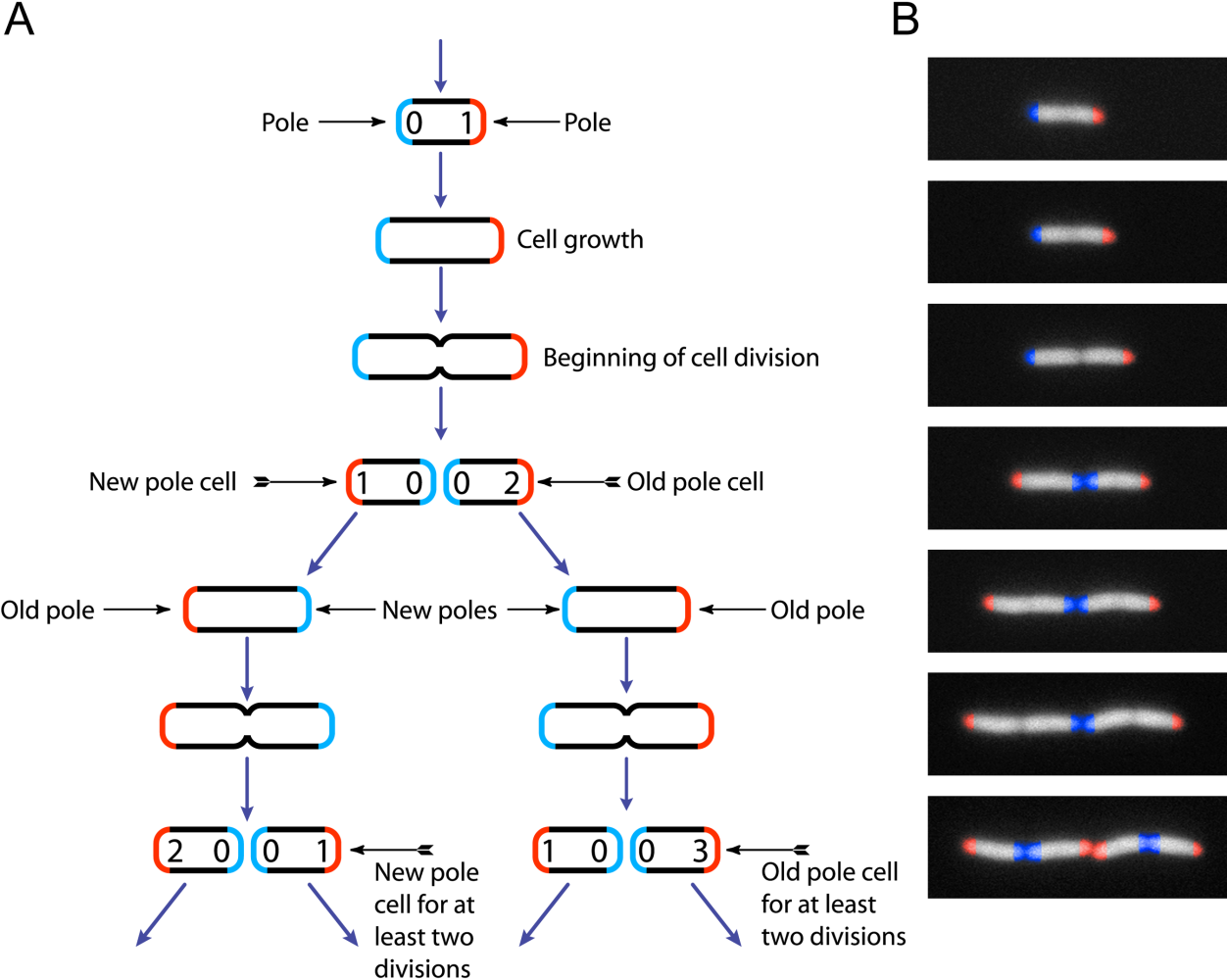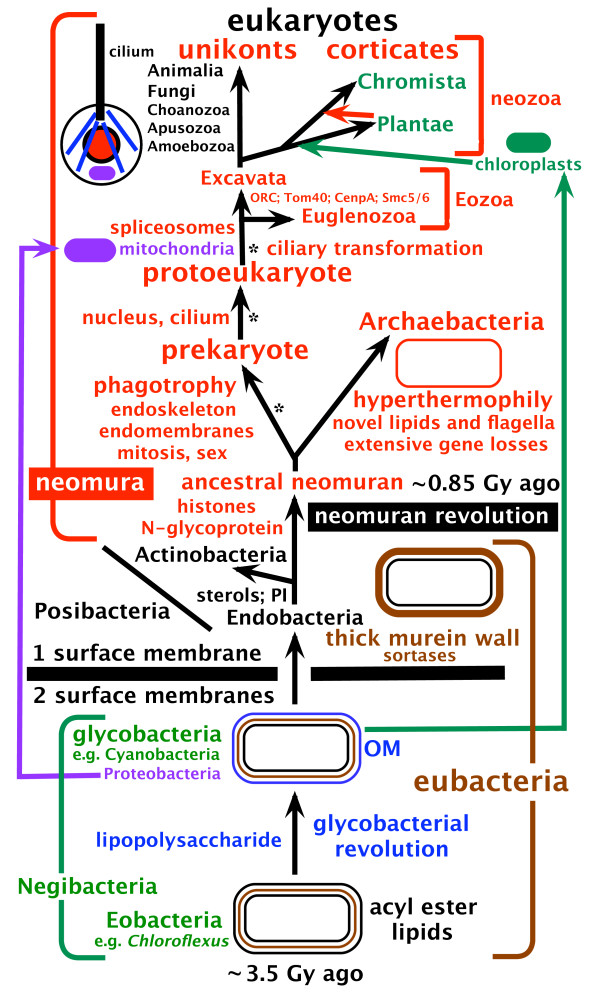|
Bacteria
Bacteria (; : bacterium) are ubiquitous, mostly free-living organisms often consisting of one Cell (biology), biological cell. They constitute a large domain (biology), domain of Prokaryote, prokaryotic microorganisms. Typically a few micrometres in length, bacteria were among the first life forms to appear on Earth, and are present in most of its habitats. Bacteria inhabit the air, soil, water, Hot spring, acidic hot springs, radioactive waste, and the deep biosphere of Earth's crust. Bacteria play a vital role in many stages of the nutrient cycle by recycling nutrients and the nitrogen fixation, fixation of nitrogen from the Earth's atmosphere, atmosphere. The nutrient cycle includes the decomposition of cadaver, dead bodies; bacteria are responsible for the putrefaction stage in this process. In the biological communities surrounding hydrothermal vents and cold seeps, extremophile bacteria provide the nutrients needed to sustain life by converting dissolved compounds, suc ... [...More Info...] [...Related Items...] OR: [Wikipedia] [Google] [Baidu] [Amazon] |
Prokaryote
A prokaryote (; less commonly spelled procaryote) is a unicellular organism, single-celled organism whose cell (biology), cell lacks a cell nucleus, nucleus and other membrane-bound organelles. The word ''prokaryote'' comes from the Ancient Greek (), meaning 'before', and (), meaning 'nut' or 'kernel'. In the earlier two-empire system arising from the work of Édouard Chatton, prokaryotes were classified within the empire Prokaryota. However, in the three-domain system, based upon molecular phylogenetics, prokaryotes are divided into two domain (biology), domains: Bacteria and Archaea. A third domain, Eukaryote, Eukaryota, consists of organisms with nuclei. Prokaryotes evolution, evolved before eukaryotes, and lack nuclei, mitochondria, and most of the other distinct organelles that characterize the eukaryotic cell. Some unicellular prokaryotes, such as cyanobacteria, form colony (biology), colonies held together by biofilms, and large colonies can create multilayered microbial ... [...More Info...] [...Related Items...] OR: [Wikipedia] [Google] [Baidu] [Amazon] |
Escherichia Coli
''Escherichia coli'' ( )Wells, J. C. (2000) Longman Pronunciation Dictionary. Harlow ngland Pearson Education Ltd. is a gram-negative, facultative anaerobic, rod-shaped, coliform bacterium of the genus '' Escherichia'' that is commonly found in the lower intestine of warm-blooded organisms. Most ''E. coli'' strains are part of the normal microbiota of the gut, where they constitute about 0.1%, along with other facultative anaerobes. These bacteria are mostly harmless or even beneficial to humans. For example, some strains of ''E. coli'' benefit their hosts by producing vitamin K2 or by preventing the colonization of the intestine by harmful pathogenic bacteria. These mutually beneficial relationships between ''E. coli'' and humans are a type of mutualistic biological relationship—where both the humans and the ''E. coli'' are benefitting each other. ''E. coli'' is expelled into the environment within fecal matter. The bacterium grows massi ... [...More Info...] [...Related Items...] OR: [Wikipedia] [Google] [Baidu] [Amazon] |
Microorganism
A microorganism, or microbe, is an organism of microscopic scale, microscopic size, which may exist in its unicellular organism, single-celled form or as a Colony (biology)#Microbial colonies, colony of cells. The possible existence of unseen microbial life was suspected from antiquity, with an early attestation in Jain literature authored in 6th-century BC India. The scientific study of microorganisms began with their observation under the microscope in the 1670s by Anton van Leeuwenhoek. In the 1850s, Louis Pasteur found that microorganisms caused food spoilage, debunking the theory of spontaneous generation. In the 1880s, Robert Koch discovered that microorganisms caused the diseases tuberculosis, cholera, diphtheria, and anthrax. Microorganisms are extremely diverse, representing most unicellular organisms in all three domains of life: two of the three domains, Archaea and Bacteria, only contain microorganisms. The third domain, Eukaryota, includes all multicellular o ... [...More Info...] [...Related Items...] OR: [Wikipedia] [Google] [Baidu] [Amazon] |
Bacillus (shape)
Bacterial cellular morphologies are the shapes that are characteristic of various types of bacteria and often key to their identification. Their direct examination under a light microscope enables the classification of these bacteria (and archaea). Generally, the basic morphologies are spheres (coccus) and round-ended cylinders or rod shaped (bacillus). But, there are also other morphologies such as helically twisted cylinders (example '' Spirochetes''), cylinders curved in one plane (selenomonads) and unusual morphologies (the square, flat box-shaped cells of the Archaean genus '' Haloquadratum)''. Other arrangements include pairs, tetrads, clusters, chains and palisades. Types Coccus A coccus (plural ''cocci'', from the Latin ''coccinus'' (scarlet) and derived from the Greek ''kokkos'' (berry)), is any microorganism (usually bacteria) whose overall shape is spherical or nearly spherical. Coccus refers to the shape of the bacteria and can contain multiple genera, such as st ... [...More Info...] [...Related Items...] OR: [Wikipedia] [Google] [Baidu] [Amazon] |
Pseudomonadati
Pseudomonadati is a kingdom containing approximately one-third of prokaryote species, mostly gram-negative bacteria and their relatives. It is the closest relative of an even larger kingdom of Bacteria, the Bacillati, which are mostly gram-positive bacteria. Names The synonymous name "Hydrobacteria" (hydro = "water") refers to the moist environment inferred for the common ancestor of those species. In contrast, species of Bacillati possess adaptations for life on land. Since 2024, the only validly published name for this group is kingdom Pseudomonadati (there used to be none, because no levels above phylum could exist in earlier versions of the Prokaryotic Code). "Gracilicutes," which was described in 1978 by Gibbons and Murray, is sometimes used in place of Pseudomonadati. However, "Gracilicutes" included Cyanobacteria (a member of Bacillati) and was not constructed under the now generally accepted three-domain system. More recently, a redefinition of "Gracilicutes" was p ... [...More Info...] [...Related Items...] OR: [Wikipedia] [Google] [Baidu] [Amazon] |
Domain (biology)
In biological taxonomy, a domain ( or ) (Latin: ''regio''), also dominion, superkingdom, realm, or empire, is the highest taxonomic rank of all organisms taken together. It was introduced in the three-domain system of taxonomy devised by Carl Woese, Otto Kandler and Mark Wheelis in 1990. According to the domain system, the tree of life consists of either three domains, Archaea, Bacteria, and Eukarya, or two domains, Archaea and Bacteria, with Eukarya included in Archaea. In the three-domain model, the first two are prokaryotes, single-celled microorganisms without a membrane-bound nucleus. All organisms that have a cell nucleus and other membrane-bound organelles are included in Eukarya and called eukaryotes. Non-cellular life, most notably the viruses, is not included in this system. Alternatives to the three-domain system include the earlier two-empire system (with the empires Prokaryota and Eukaryota), and the eocyte hypothesis (with two domains of Bacteria and A ... [...More Info...] [...Related Items...] OR: [Wikipedia] [Google] [Baidu] [Amazon] |
Carl Woese
Carl Richard Woese ( ; July 15, 1928 – December 30, 2012) was an American microbiologist and biophysicist. Woese is famous for defining the Archaea (a new domain of life) in 1977 through a pioneering phylogenetic taxonomy of 16S ribosomal RNA, a technique that has revolutionized microbiology. He also originated the RNA world hypothesis in 1967, although not by that name. Woese held the Stanley O. Ikenberry Chair and was professor of microbiology at the University of Illinois Urbana–Champaign. Life and education Woese was born in Syracuse, New York on July 15, 1928. His family was German American. Woese attended Deerfield Academy in Massachusetts. He received a bachelor's degree in mathematics and physics from Amherst College in 1950. During his time at Amherst, Woese took only one biology course (Biochemistry, in his senior year) and had "no scientific interest in plants and animals" until advised by William M. Fairbank, then an assistant professor of physics at A ... [...More Info...] [...Related Items...] OR: [Wikipedia] [Google] [Baidu] [Amazon] |
Bacillati
Bacillati, formerly known as Terrabacteria, is a kingdom containing approximately two-thirds of prokaryote species, including those in the gram positive phyla (Actinomycetota and Bacillota) as well as the phyla Cyanobacteria, Chloroflexota, and Deinococcota. It derives its name (''terra'' = "land") from the evolutionary pressures of life on land. Bacillati possess important adaptations such as resistance to environmental hazards (e.g., desiccation, ultraviolet radiation, and high salinity) and oxygenic photosynthesis. Also, the unique properties of the cell wall in gram-positive taxa, which likely evolved in response to terrestrial conditions, have contributed toward pathogenicity in many species. These results now leave open the possibility that terrestrial adaptations may have played a larger role in prokaryote evolution than currently understood. "Terrabacteria" ( syn. Bacillati) was proposed in 2004 for Actinomycetota, Cyanobacteria, and Deinococcota and was expanded later ... [...More Info...] [...Related Items...] OR: [Wikipedia] [Google] [Baidu] [Amazon] |
Deep Biosphere
The deep biosphere is the part of the biosphere that resides below the first few meters of the ocean's surface. It extends below the continental surface and below the sea surface, at temperatures that may reach beyond which is comparable to strain 121, the maximum temperature where a metabolically active organism has been found. It includes all three Domain (biology), domains of life and the genetic diversity rivals that on the surface. The first indications of deep life came from studies of oil fields in the 1920s, but it was not certain that the organisms were indigenous until methods were developed in the 1980s to prevent contamination from the surface. Samples are now collected in deep mines and scientific drilling programs in the ocean and on land. Deep observatories have been established for more extended studies. Near the surface, living organisms consume organic matter and breathe oxygen. Lower down, these are not available, so they make use of "edibles" (electron don ... [...More Info...] [...Related Items...] OR: [Wikipedia] [Google] [Baidu] [Amazon] |
Bacillus
''Bacillus'', from Latin "bacillus", meaning "little staff, wand", is a genus of Gram-positive, rod-shaped bacteria, a member of the phylum ''Bacillota'', with 266 named species. The term is also used to describe the shape (rod) of other so-shaped bacteria; and the plural ''Bacilli'' is the name of the class of bacteria to which this genus belongs. ''Bacillus'' species can be either obligate aerobes which are dependent on oxygen, or facultative anaerobes which can survive in the absence of oxygen. Cultured ''Bacillus'' species test positive for the enzyme catalase if oxygen has been used or is present. ''Bacillus'' can reduce themselves to oval endospores and can remain in this dormant state for years. The endospore of one species from Morocco is reported to have survived being heated to 420 °C. Endospore formation is usually triggered by a lack of nutrients: the bacterium divides within its cell wall, and one side then engulfs the other. They are not true spores (i.e. ... [...More Info...] [...Related Items...] OR: [Wikipedia] [Google] [Baidu] [Amazon] |
Cavalier-Smith
Thomas (Tom) Cavalier-Smith, Royal Society, FRS, Royal Society of Canada, FRSC, Natural Environment Research Council, NERC Professorial Fellow (21 October 1942 – 19 March 2021), was a professor of evolutionary biology in the Department of Zoology, at the University of Oxford. His research has led to discovery of a number of unicellular organisms (protists) and advocated for a variety of major taxonomic groups, such as the Chromista, Chromalveolata, Opisthokonta, Rhizaria, and Excavata. He was known for Cavalier-Smith's system of classification, his systems of classification of all organisms. Life and career Cavalier-Smith was born on 21 October 1942 in London. His parents were Mary Maude (née Bratt) and Alan Hailes Spencer Cavalier Smith. He was educated at Norwich School (educational institution), Norwich School, Gonville and Caius College, Cambridge (MA) in Biology and King's College London (PhD) in Zoology. He was under the supervision of John Randall (phys ... [...More Info...] [...Related Items...] OR: [Wikipedia] [Google] [Baidu] [Amazon] |
Candidatus Ovibacter
In prokaryote nomenclature, ''Candidatus'' (abbreviated ''Ca.''; Latin for "candidate of Roman office") is used to name prokaryotic taxa that are well characterized but yet- uncultured. Contemporary sequencing approaches, such as 16S ribosomal RNA sequencing or metagenomics, provide much information about the analyzed organisms and thus allow identification and characterization of individual species. However, the majority of prokaryotic species remain uncultivable and hence inaccessible for further characterization in ''in vitro'' study. The recent discoveries of a multitude of candidate taxa has led to candidate phyla radiation expanding the tree of life through the new insights in bacterial diversity. Nomenclature History The initial International Code of Nomenclature of Prokaryotes (ICNP) as well as early revisions did not account for the possibility of identifying prokaryotes which were not yet cultivable. This was in apparent conflict with the ICNP's stated scope, whic ... [...More Info...] [...Related Items...] OR: [Wikipedia] [Google] [Baidu] [Amazon] |








